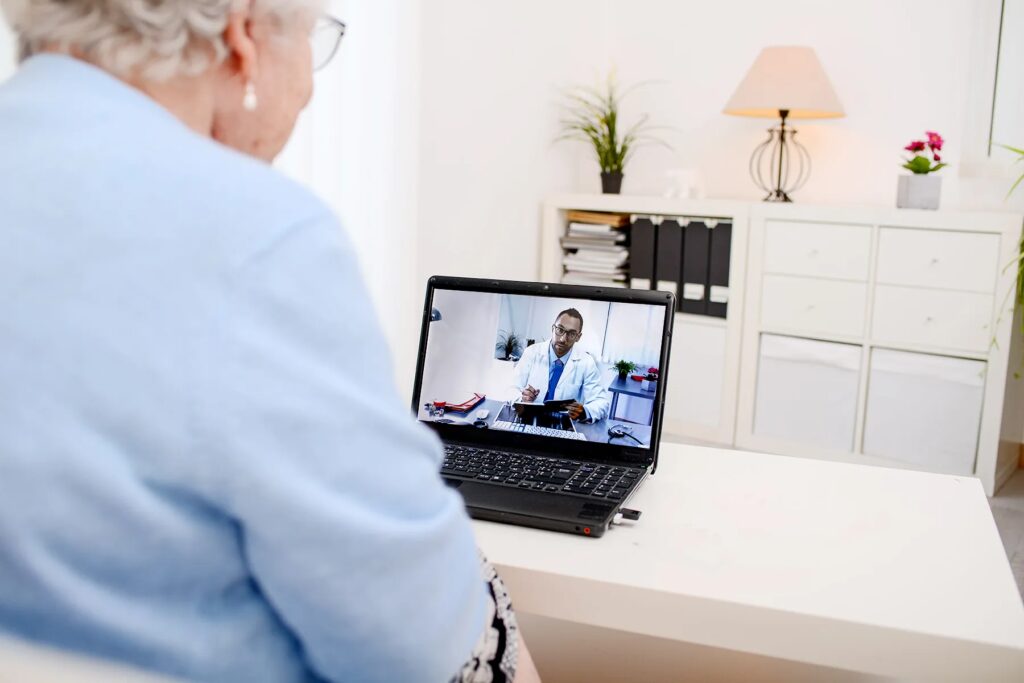COVID-19 has changed the way we do everything — especially when it comes to doctor visits. Older adults have a higher risk of complications from the coronavirus, so it’s best to avoid unnecessary exposure. But sometimes you need to see the doctor in person. And what if you have to go to the hospital? We asked experts for what to expect and how to get the best care, now that some restrictions have been lifted.
What to Expect
Even though COVID-19 guidelines have led to changes in safety restrictions, health care facilities still have a high level of requirement and protections, says Marc Rabinowitz, MD, who specializes in internal medicine in Bucks County, PA.
“The restrictions that have been lifted don’t apply to health care settings,” Rabinowitz says. Safety protocols like masking and social distancing are still in place in medical settings like hospitals and nursing homes.
At Your Doctor’s Office
Doctors’ offices still have safety protocols in place to protect patients and staff from COVID-19.
Here are some things you can expect:
- Masks may be required.
- Doctors and staff may wear masks and gloves.
- Waiting rooms may have fewer people at one time.
- Visitors may be limited.
- Staff may disinfect and sanitize regularly.
- The office may be set up for social distancing.
Some medical facilities still limit visitors, so your family or caregivers may have to wait outside. But they can still be involved in your visits, says Alexis Halpern, MD, a geriatric emergency medicine physician at NewYork-Presbyterian/Weill Cornell Medical Center. Your doctor can call or video chat with your family so they’re updated and included in decision-making.
At the Hospital
“Please do not stay home because you’re afraid you’ll be exposed or catch coronavirus while you’re at the hospital,” Halpern says. Hospitals have protocols in place to protect you from getting sick.
Many new safety protocols from the beginning of the pandemic are still in place, along with some new ones.
Here’s what you can expect:
- Doctors and staff wear personal protective equipment like masks, face shields, and gloves.
- Masks may be required.
- Visitors may be limited.
- You may have to show proof of full vaccination against COVID-19.
- You may be tested for COVID-19.
- You may have a temperature and symptom screening when you arrive.
Hospitals are as safe as ever, if not more. Don’t avoid them if you need care.
Get help right away if you have severe chest pain, shortness of breath, weakness on one side, or can’t speak clearly. They’re signs of heart attack or stroke, which need immediate attention.
A Rise in Telemedicine
Many doctors now use telemedicine, which is also called telehealth. That means instead of going to your doctor’s office, you talk at a distance, on your phone, iPad, or computer, on video platforms like Zoom, FaceTime, Skype, and WhatsApp.
Telemedicine is safe and convenient. You can check in with your doctor or get answers to questions without leaving home. Your family can be involved, even if they’re far away. It’s covered by Medicare and commercial insurance. Protocols may vary based on the state you live in.
Telemedicine is good for routine visits, checkups, and consultations. You can tell your doctor how you feel or show them symptoms.
For other things, in-office visits are best. Your doctor may need to check your blood pressure, listen to your lungs, take blood samples, or do a physical exam.
Your doctor will help you decide which type of visit is best for you.
The Future of Telemedicine
Telehealth is likely here to stay.
“Even as COVID has waned, some of my baby boomer patients who are more tech-savvy still prefer telehealth. I expect this trend to continue,” says David J. Maleh, MD, a doctor in Wilmington, DE, who specialized in internal medicine.
Telemedicine probably won’t replace in-office visits completely, but it may become a regular part of your care.
Maleh says many of his patients come in person for regular yearly physicals, then use telehealth for follow-up conversations. “It’s the direction we’re going in as patients are more comfortable using telehealth as a convenient option when it may not be necessary to be seen in the office,” he says.
New Trends in Long-Term Care
Many things have changed at long-term and skilled-nursing facilities besides safety requirements. The pandemic has left a lasting mark on how these facilities operate and how easy it is to find care at them.
Staffing shortages have led many facilities to close or operate at a lower capacity. Many health care workers have left the workforce since the start of the pandemic. Some are afraid of being exposed to people who may have COVID. Some have turned to private work because they can earn more that way, Maleh says.
More people are now caring for their loved ones at home and hiring at-home care. Many people have pivoted to working remotely, which makes caring for loved ones easier.
“Clearly there’s an advantage to being at home, as you’re not exposed to other people who are ill or may become ill,” Rabinowitz says. But it may be harder to find help. “Shortages in health care personnel have created a dilemma in providing optimal care for the elderly,” he says.
How to Get the Best Care
These resources may help you find care.
- The Eldercare Locator can help you with local information on housing, support services, health care, and insurance.
- Family Caregiver Alliance has information on caregiving, in-home care, nursing homes, and finances.
- BenefitsCheckUp.org can help you find out if you can get financial help with food and medicine.
- Programs like FamilyWize, GoodRX, and NeedyMeds may offer discounts on prescription medication to help you offset increased costs of care from the pandemic.

